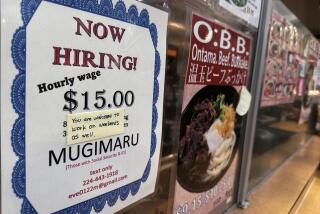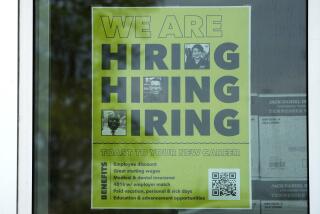Durable goods orders and new jobless claims decline
Orders for long-lasting U.S. manufactured goods fell in February as companies scaled back investment plans for a second month in a row, suggesting a cooling off in business spending.
Other data Thursday showed the labor market’s recovery was becoming well-established, with new claims for jobless benefits falling last week and the four-week moving average dropping to it lowest level in more than 2 1/2 years.
Economists said that while the weak manufacturing report posed a risk to first-quarter growth, they cautioned against placing too much weight on it, noting the data was in stark contrast to other upbeat surveys on factory activity. Data on durable goods orders is also very volatile.
“If the numbers continue to be soft, that would be something to be concerned about, but we are seeing very strong manufacturing numbers from other reports,” said Robert Dye, a senior economist at PNC Financial Services in Pittsburgh.
Non-defense capital goods orders excluding aircraft, a closely watched proxy for business spending, fell 1.3% in February after a 6% drop in January, the Commerce Department said.
Economists had expected the business-spending gauge to rise 4.5% last month.
The weakness in business demand and a big drop in defense aircraft orders helped pull down overall orders for so-called durable goods, items meant to last three years or more, by 0.9%. They had risen 3.6% in January.
A second report from the Labor Department showed initial claims for state unemployment benefits slipped 5,000 to a seasonally adjusted 382,000, a touch below economists’ expectations for a fall to 383,000.
The four-week moving average of new claims — a better measure of underlying trends — dropped 1,500 to 385,250, the lowest since mid-July 2008.
It was the fourth straight week the closely watched average held below the 400,000 level that economists associate with steady job growth.
More to Read
Inside the business of entertainment
The Wide Shot brings you news, analysis and insights on everything from streaming wars to production — and what it all means for the future.
You may occasionally receive promotional content from the Los Angeles Times.










